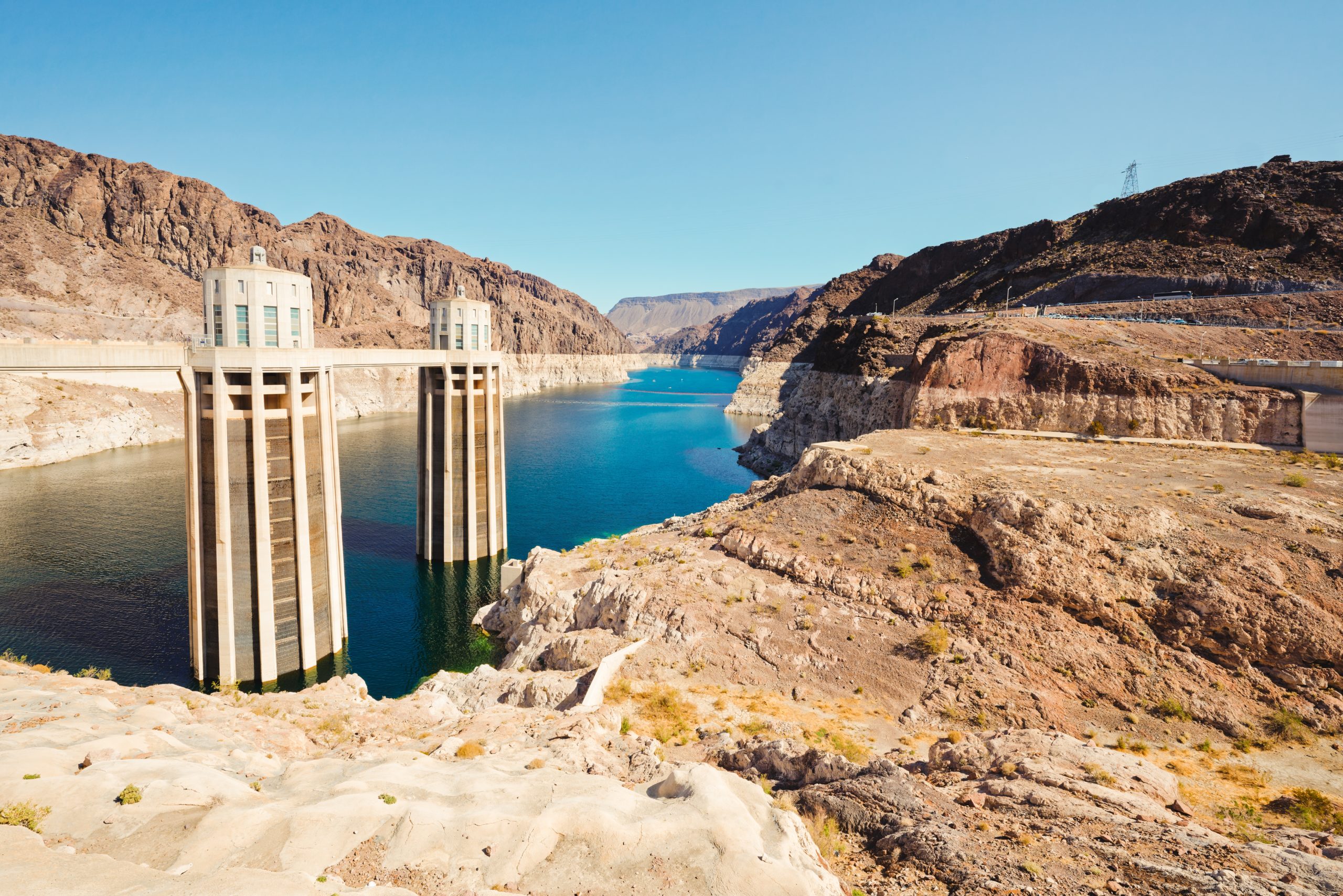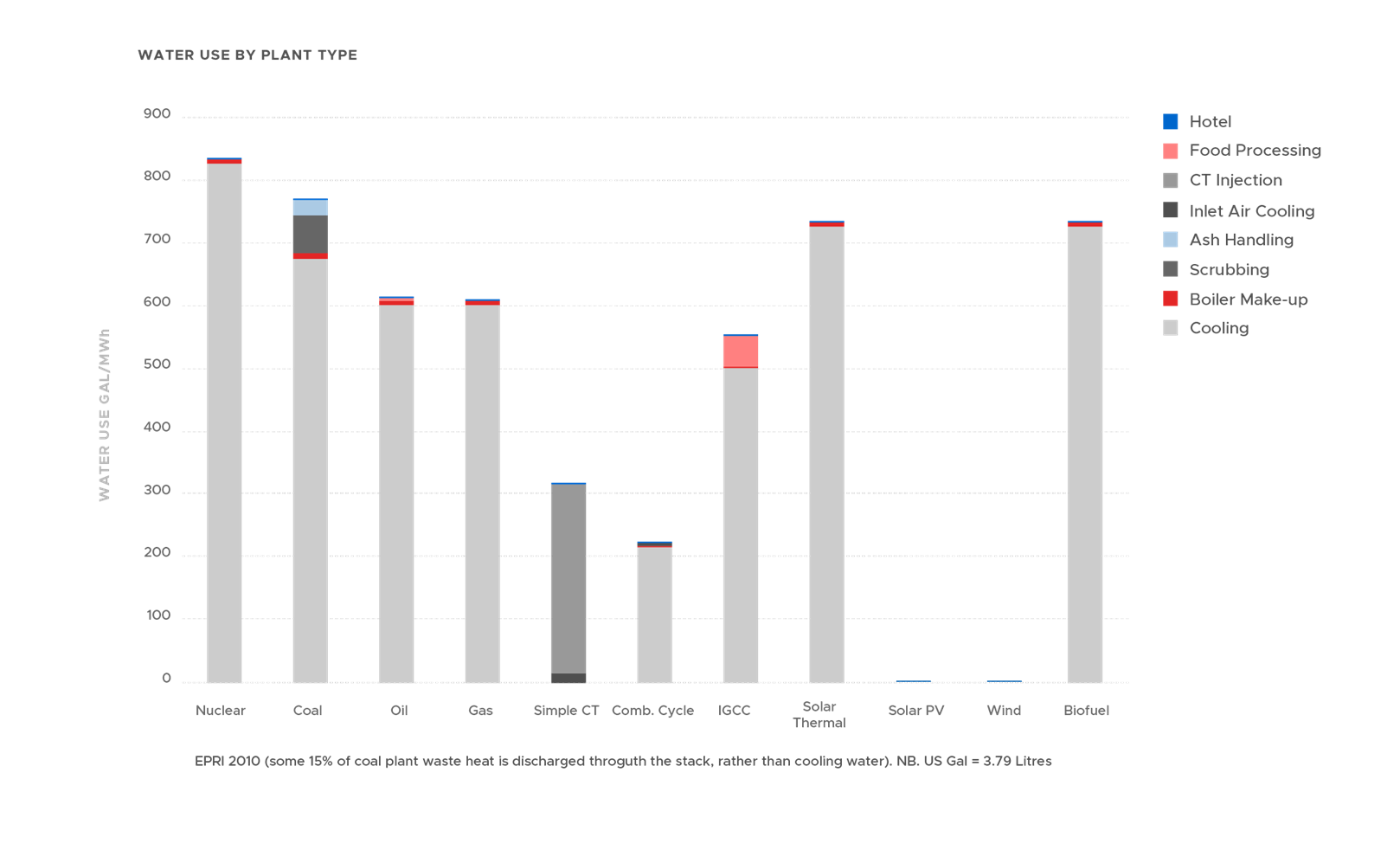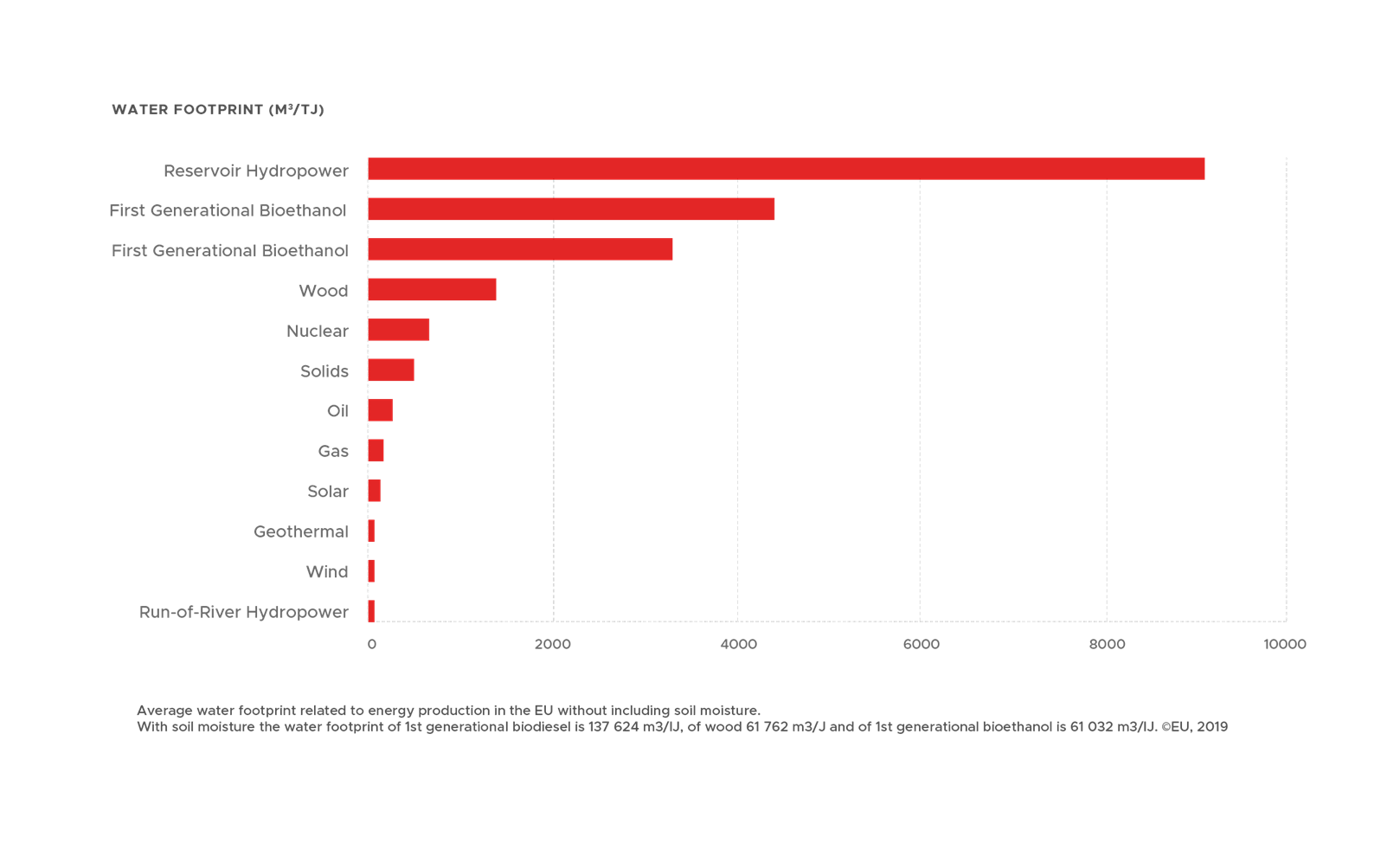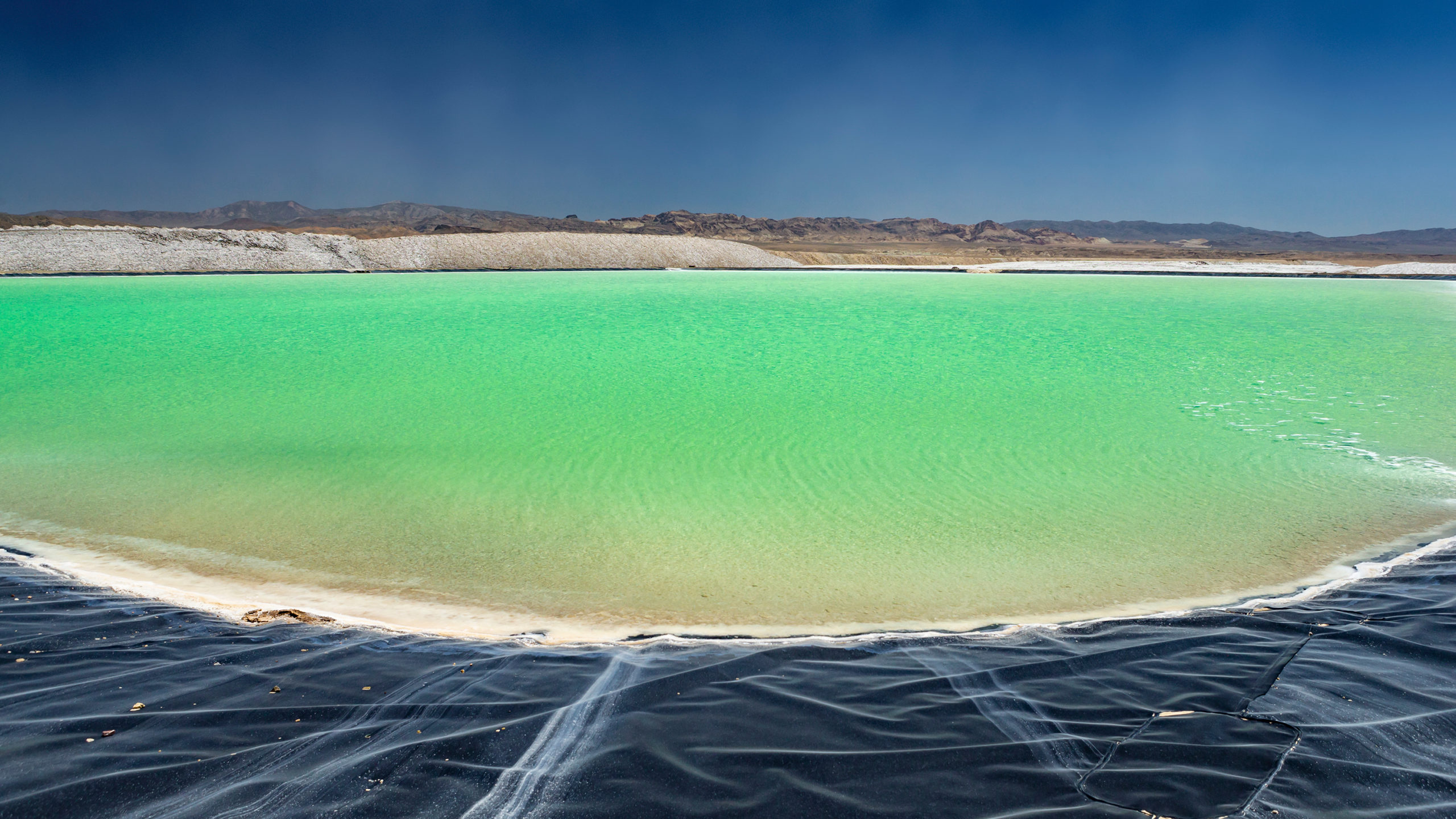As the world focuses on water availability in light of recent climate change related events this year, our Corporate Relations Manager, Ralph Anderson, lifts the lid on how much water is used in current power generation and looks at potential alternatives.
Wednesday 23 November 2022
Climate change is becoming an ever-greater issue around the world – the increasing number of extreme weather events are more widely reported on and the impact on global economies and energy systems is more acutely felt. The disruption appears mainly in one of two forms: storms, which damage infrastructure; or heatwaves, which not only increase energy demand (for cooling) but also reduce water levels and lead to wildfires, which in turn damages infrastructure. It is a vicious cycle that is only becoming worse as time passes.
Of these two dangers that we face, water shortages are highly significant, given its importance not only to life at all levels, but because of the role it plays in our current power generation system. According to the World Meteorological Organisation (WMO), in 2020, 87% of global electricity generated from thermal, nuclear and hydroelectric systems directly depended on water availability. If heatwaves threaten the water supply to a majority of these systems, it is fair to say that they will have a disproportionate knock-on effect to the global economy. Looking deeper, the WMO goes on to point out two more concerning points: that 33% of the thermal power plants that rely on freshwater availability for cooling are in high water stress areas; and that 15% of existing nuclear power plants are in similar areas too, a share expected to increase to 25% in the next 20 years. This is concerning in light of the increasing number of heatwaves, as more areas are therefore likely to experience high water stress and the numbers calculated by the WMO will naturally increase.
This year we have seen two major examples of what this means. First, one of the largest pumped hydro schemes in the world, China’s Three Gorges Dam, had to be turned off this summer due to a lack of water. Second, the Rhine, Western Europe’s most important waterway, was at historic lows in August 2022. If these events caused by climate change continue every year, it is clearly going to have a detrimental effect on our ability to produce energy sustainably.

Image – Hoover Dam, Nevada-Arizona, USA – October 2, 2021. The largest water reservoir in the US barely a third full. Drought is dropping water level to a historically low level
Current water usage in power generation

Current energy production uses water primarily for cooling (see above chart). Water can either be used for direct or “once-through” cooling, or for recirculating/indirect cooling (if there is a lack of access to abundant water). A large number of the current power generation plants were built to use the once-through method because, according to a US DOE study in 2009, a recirculation method was seen to reduce the overall efficiency of the power plant by 2-5% and recirculation-based systems were up to 40% more expensive.
With these facts in mind, let’s now look at how much water is used in power generation around the world. The US used 47.5 trillion gallons of water for power generation in 2020. Europe uses 1,301 litres per person per day (2019) in energy production and Australia used around 60 thousand gigalitres of water throughout 2021. These are phenomenal volumes of water to continue to use for “once-through” cooling systems and, given the increasingly reported water shortages, are probably unsustainable in the long run. The question that therefore ought to be asked is, “is there another way”?
Wind and Solar generation use much less water
The answer is helpfully provided in that same chart – solar PV and wind. Neither of these generating technologies require water for cooling, thus providing a useful, commercially advanced solution that is not only already widely installed but also has the potential to be deployed yet further all around the world.
A study published in 2020 concluded that “wind and solar will reduce 97% of water consumption in energy generation”. This is because wind turbines do not use water to generate electricity and solar panels only require modest amounts of water for cleaning purposes to maintain efficiency. The chart below outlines water footprint related to energy production in the EU in 2019:

Source: Smart Water Magazine
The chart confirms that wind and solar have the lowest water footprint of the most widely available and commercial technologies. This means they have the ability to be placed in locations that are best suited for generation capability but where access to water is limited, and this could lead to a better use of land and resources in the longer term. However, for wind and solar to step up to become reliable, base load generation for national grids, they need energy storage technology installed alongside that can mitigate their known issues of intermittency and avoid the issue of curtailment.
Battery Energy Storage best complements wind and solar
There are a number of energy storage technologies available that can be used to support wind and solar plants (such as thermal, mechanical or hydrogen storage) but many of these are still in the early stages of development and, in most cases, not yet fully commercially available. There is of course pumped hydro, which is a well-known storage technology. However, remembering what happened to the Three Gorges Dam this year as the charts in this article has outlined, pumped hydro schemes require large volumes of water to be effective and might not be sensible if the focus is trying to reduce water usage in power generation. They also require suitable geography, a much larger capital cost and sufficient time consideration to build on the scale required.
Realistically therefore, due to being commercially available now, batteries are most likely to be the best energy storage technology to use to mitigate renewable intermittency. For example, the UK already has over 1.3GW of operational battery storage capacity with a total pipeline of 16.5GW. The US’ operational battery capacity increased by 311% in August 2021, from 1,631 MW in January 2021, and Australia is expected to reach 1.1GW by the end of 2022.
However, whilst lithium technology has been a leading battery technology for many years, its use in large scale energy storage applications has seen a number of issues come to the fore, most importantly fires such as in the US at Moss Landing recently in 2022, in Australia near Geelong, Victoria in 2021 and across a number of sites in Korea since 2017. The amount of water used in the extraction of lithium has also been criticised in recent times with some estimates ranging from 400 to 2 million litres of water per kilo of lithium.

Image – Lithium Mine – Carbonate from Evaporation Ponds Mined in Nevada Desert
Alternatives to lithium that do not suffer from the same drawbacks, such as the vanadium flow batteries manufactured by Invinity, are fast becoming a preferred solution in certain applications and environmental conditions, not to mention that these batteries can also access a broad range of financial support options, such as that provided in the US Inflation Reduction Act for example. Developers are also starting to become more conscious about sustainability, including considering the importance of safety, recyclability and end of life requirements – areas where Invinity’s vanadium flow batteries perform extremely well.
Conclusion
Given the focus at COP27 on the nexus of water alongside food and energy, the importance of addressing this opportunity now has never been greater. Looking through the evidence, electricity can clearly be generated with vastly reduced water usage by using wind and solar. Tying these generators with safe and reliable energy storage technology, such as vanadium flow batteries, will enable national grids to transition away at pace from existing technologies and provide cleaner energy for the future. This will not only drastically reduce power generation’s requirement for water but will also help to cut the sector’s CO2 emissions, an important step that will be of great benefit in reducing the rate of climate change.